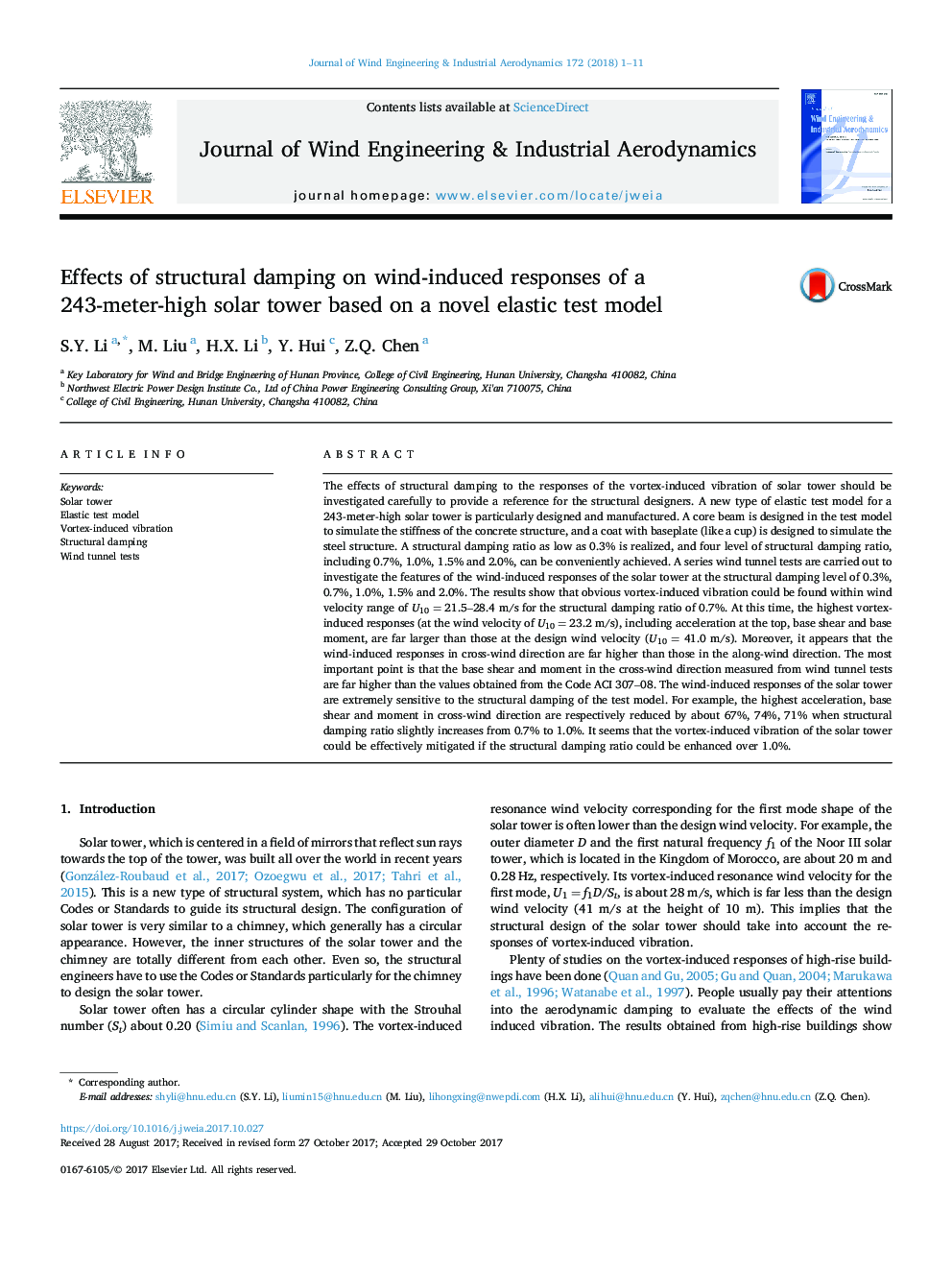| Article ID | Journal | Published Year | Pages | File Type |
|---|---|---|---|---|
| 6757155 | Journal of Wind Engineering and Industrial Aerodynamics | 2018 | 11 Pages |
Abstract
The effects of structural damping to the responses of the vortex-induced vibration of solar tower should be investigated carefully to provide a reference for the structural designers. A new type of elastic test model for a 243-meter-high solar tower is particularly designed and manufactured. A core beam is designed in the test model to simulate the stiffness of the concrete structure, and a coat with baseplate (like a cup) is designed to simulate the steel structure. A structural damping ratio as low as 0.3% is realized, and four level of structural damping ratio, including 0.7%, 1.0%, 1.5% and 2.0%, can be conveniently achieved. A series wind tunnel tests are carried out to investigate the features of the wind-induced responses of the solar tower at the structural damping level of 0.3%, 0.7%, 1.0%, 1.5% and 2.0%. The results show that obvious vortex-induced vibration could be found within wind velocity range of U10Â =Â 21.5-28.4Â m/s for the structural damping ratio of 0.7%. At this time, the highest vortex-induced responses (at the wind velocity of U10Â =Â 23.2Â m/s), including acceleration at the top, base shear and base moment, are far larger than those at the design wind velocity (U10Â =Â 41.0Â m/s). Moreover, it appears that the wind-induced responses in cross-wind direction are far higher than those in the along-wind direction. The most important point is that the base shear and moment in the cross-wind direction measured from wind tunnel tests are far higher than the values obtained from the Code ACI 307-08. The wind-induced responses of the solar tower are extremely sensitive to the structural damping of the test model. For example, the highest acceleration, base shear and moment in cross-wind direction are respectively reduced by about 67%, 74%, 71% when structural damping ratio slightly increases from 0.7% to 1.0%. It seems that the vortex-induced vibration of the solar tower could be effectively mitigated if the structural damping ratio could be enhanced over 1.0%.
Related Topics
Physical Sciences and Engineering
Energy
Renewable Energy, Sustainability and the Environment
Authors
S.Y. Li, M. Liu, H.X. Li, Y. Hui, Z.Q. Chen,
